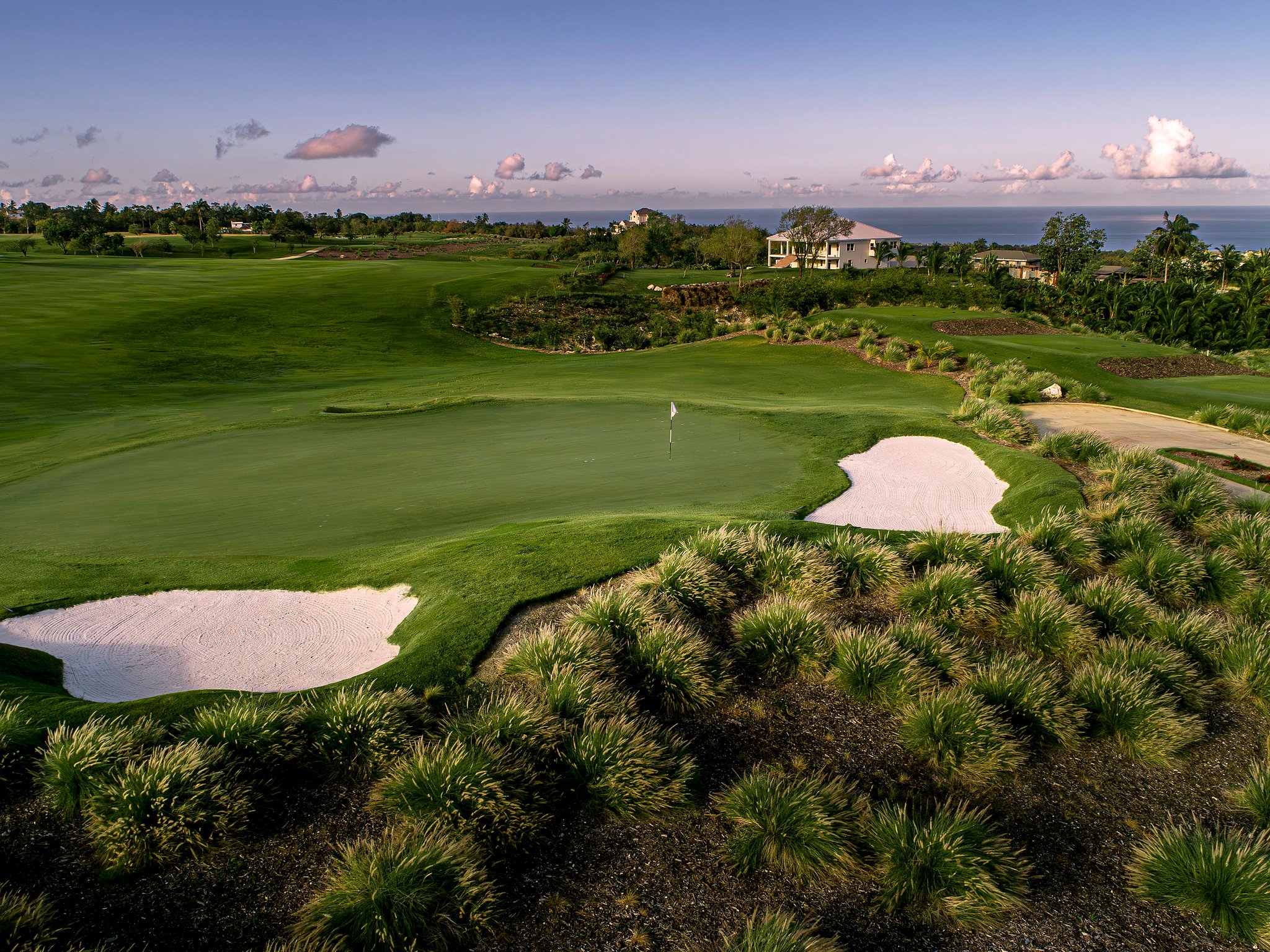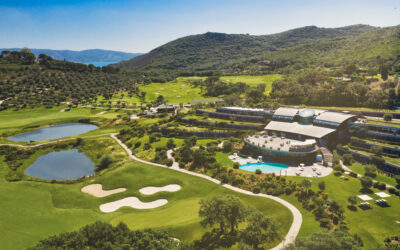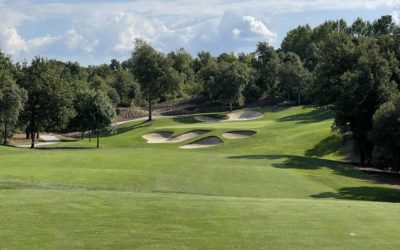In the second of our three articles on links courses along the Moray Firth, we visit Nairn Dunbar Golf Club. While it’s not as well known as its illustrious neighbours, it’s a cracking links golf course which requires guile, accuracy, shot shaping and a little luck to score well on.
Nairn Dunbar Golf Club
Golf was first played here in 1899. Originally only 9 holes, it became an 18 hole layout in 1924. The course continued to evolve until the outbreak of World War Two. During the war, encroachments were built and the beach was covered with land mines. Amazingly, despite the obvious danger, golf continued to be played. After the war, it took a monumental effort by the green staff as well as volunteers to repair the damage caused by the war defences.
The course is similar in length to its more heralded neighbour, however at no point do you see the adjacent beach and can only see the Moray Firth at high tide when it encroaches onto the land at the far end of the course.
The club won the 2021 Environmental Golf Course of the year award, beating 36,000 other courses from around the world. It was fantastic recognition for Course Manager, Richard Johnstone and his team for their restoration of the original links layout using sustainable management. Richard is one of only 87 Master Greenkeepers in the world and has enhanced his reputation for providing firm, fast and smooth greens through the reintroduction of fine-leaved grasses
We were joined on our round by Robbie Stewart, Director of Golf at Nairn Dunbar and formerly the Head Professional at my home club of Largs.
The Front Nine
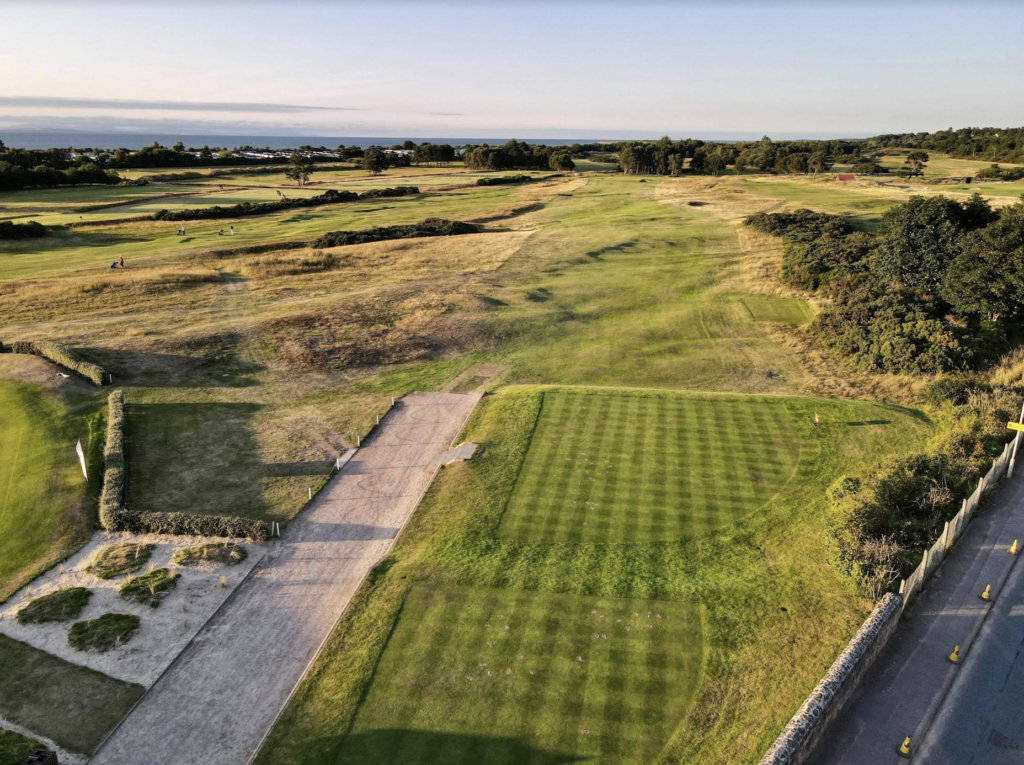 The 1st hole
The 1st hole
Normally, when you are faced with a 420-yard par 4 as your first hole, you would think that’s a tough start. However, when it pays slightly downhill and the course is fast and running, that’s not the case. Hit the fairway and the ball runs for miles. Your challenge is avoiding bunkers that normally would be out of reach. A decent drive will leave you a mid to short iron to the green.
The 2nd and 3rd are short holes. The 2nd is a short par 4 where your approach shot is played to a green you can’t see. Judging your second shot is key to having a decent birdie chance.
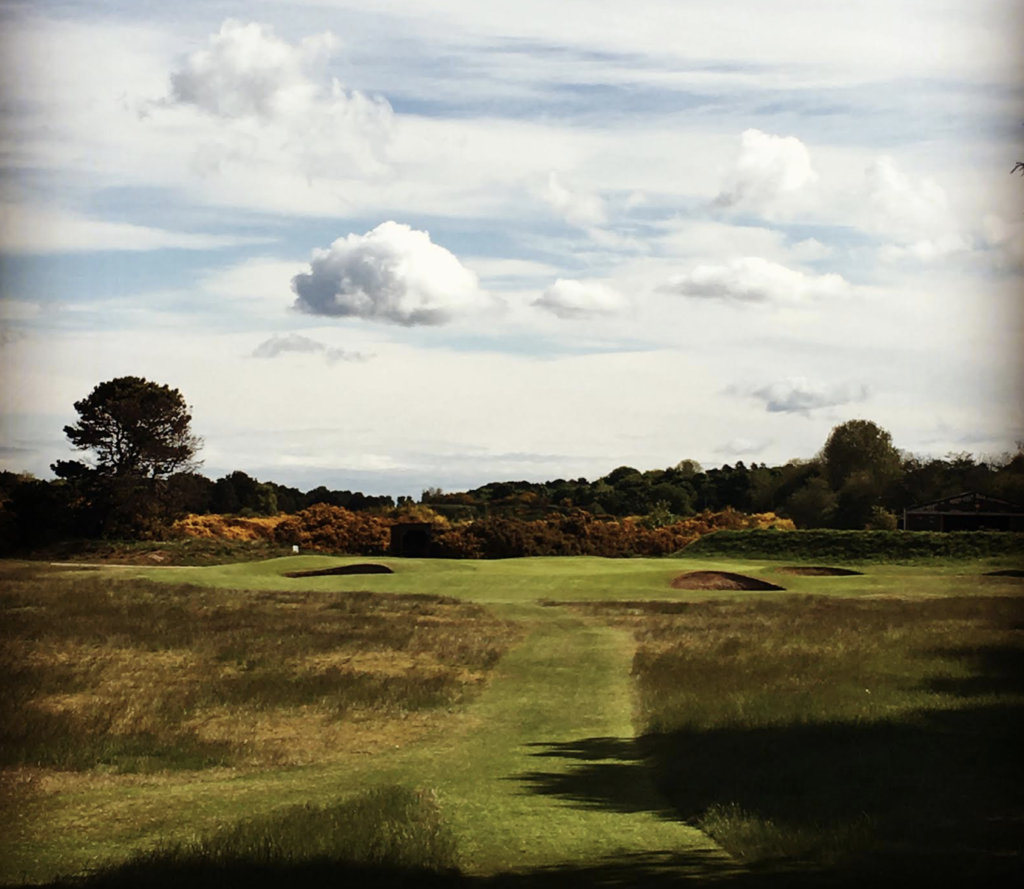 The 3rd hole
The 3rd hole
The 3rd is a 190-yard par 3 with three bunkers guarding the front of the green. Make sure you take enough club to get to the middle of the green. If you do that you may have a good look at birdie.
Hard Stretch
The four-hole stretch from the 4th through the 7th is the hardest run of holes on the course. Holes 4 and 5 are 450-yard par 4’s. The 4th has a narrow fairway with trees and bushes on the left and gorse bushes on the right. It’s a terrific hole but you have to find the fairway off the tee. Find a bush off the tee and you can easily run up a high number.
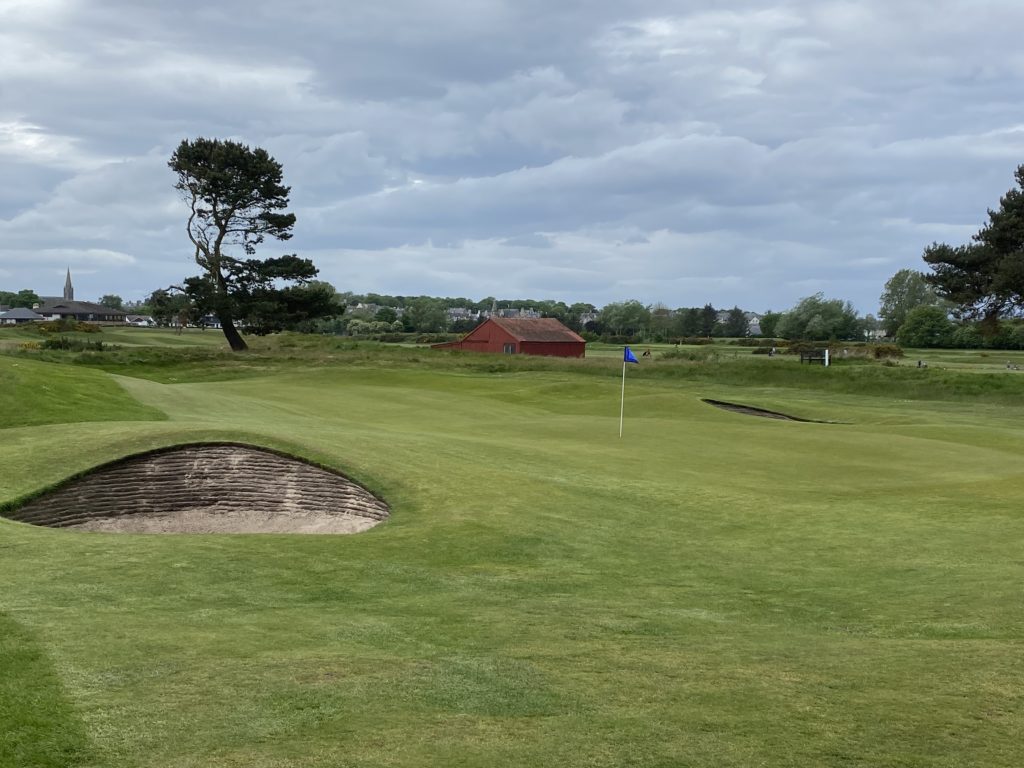 The 5th green
The 5th green
The 5th is the most difficult hole on the course. Three bunkers guard the left side of the fairway and there is more gorse on the right. Add in that the green is long and narrow means it’s a tough par 4.
Aim Right
There is not much of a let-up on the 6th. Two bunkers on the left of the fairway mean you should favour the right side. Go too far right and there are bushes to contend with. Your approach shot is then played to a sloping green that sits 20 feet above you.
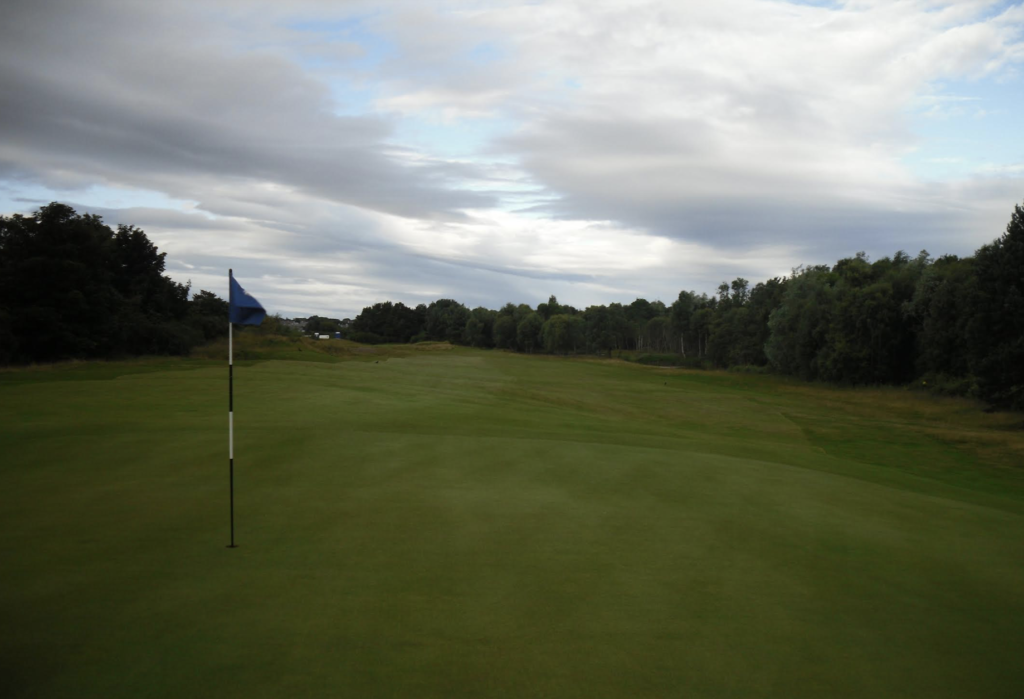
The 7th is slightly shorter at just under 400 yards but is no pushover. A slight dogleg right, the corner is protected by wetlands on the left and a bunker on the right of the fairway. Oh, and there is out-of-bounds right and bushes on both sides. If your approach shot to the green is not up it will feed off left where a large bunker awaits.
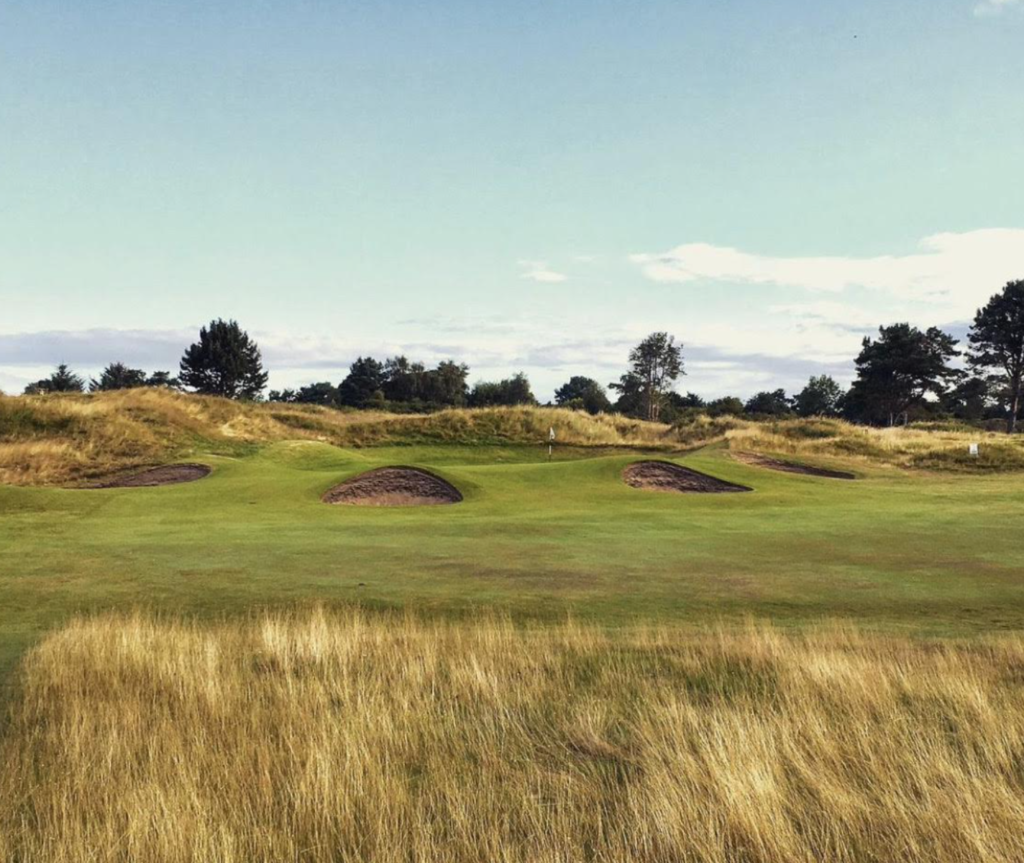 The 8th hole
The 8th hole
The 8th is a medium length par 3. Four bunkers guard the small green which you can’t see as it sits in a bowl. Judging the distance is imperative as anything short of the putting surface and over the bunkers will kick to the back left of the green. Anything long and you can forget about getting a par.
After the tough run of holes, the front nine ends with a great birdie opportunity. The first of four par 5’s on the course, the 9th is reachable in two if you miss the bushes just off the fairway on the right side. The green slopes right to left, any shot that lands in the left half of the green will end up in a run-off area.
Turning for Home
The 10th hole, a dogleg left has only one bunker, right on the corner but it also has a stream running all the way down the left of the hole, and past the green. If you avoid it off the tee, the danger isn’t over as a ball landing on the left side of the green could easily run off and into the burn. It’s not the second hardest hole on the course for nothing.
Birdie Chances
While holes 4 through 7 were the hardest holes, holes 11 through 16 offer birdies. There are two reachable par 5’s, two shorter par 4’s and a 160-yard par 3.
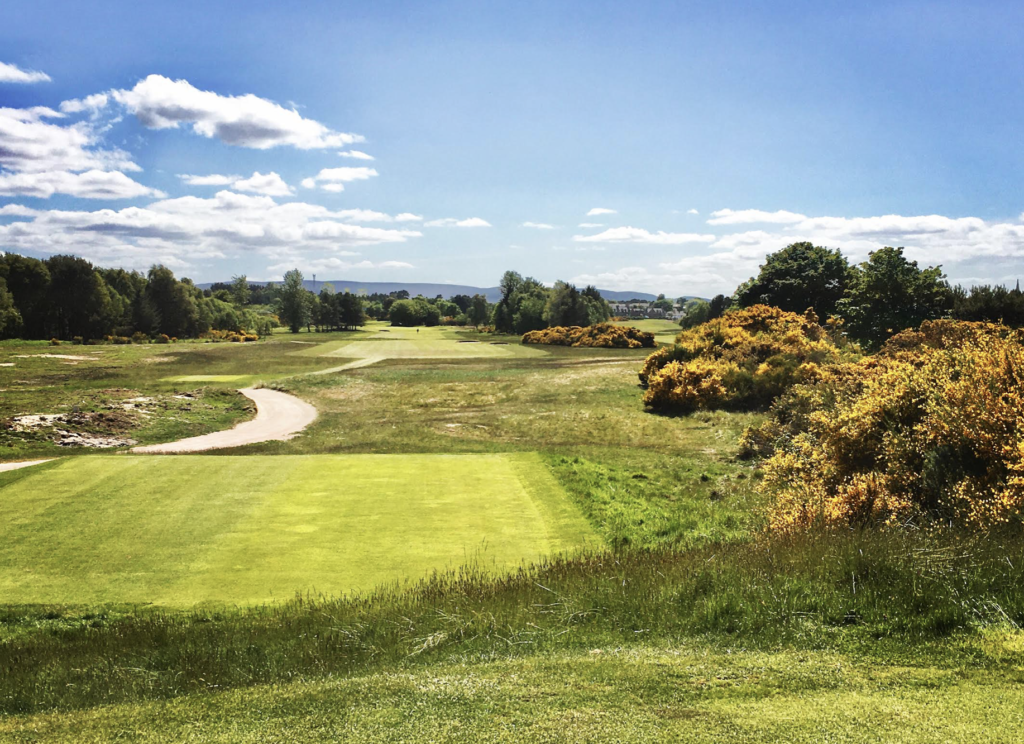 The 13th hole
The 13th hole
The 13th is the longest par 5 on the course at 530 yards. A burn runs diagonally across the fairway and is reachable for the longer hitter. The burn also continues up the left side. It’s an easier birdie chance if you lay up short of the green which has a ridge running through it. a good pitch shot to the right level gives you a makeable putt for birdie and at worst, an easy par 5.
Holes 14 and 15 offer realistic birdie chances. The 14th is a short par 4 which is all about position off the tee. Resist the temptation to open the shoulders with a driver as trouble awaits down the right side. Middle of the fairway with a 3 wood or hybrid leaves a short iron in and a putt for a 3. The 15th is the last par 3. The front half of the green is protected by 5 bunkers so take enough club. A shot to the heart of the green should give you a great birdie chance.
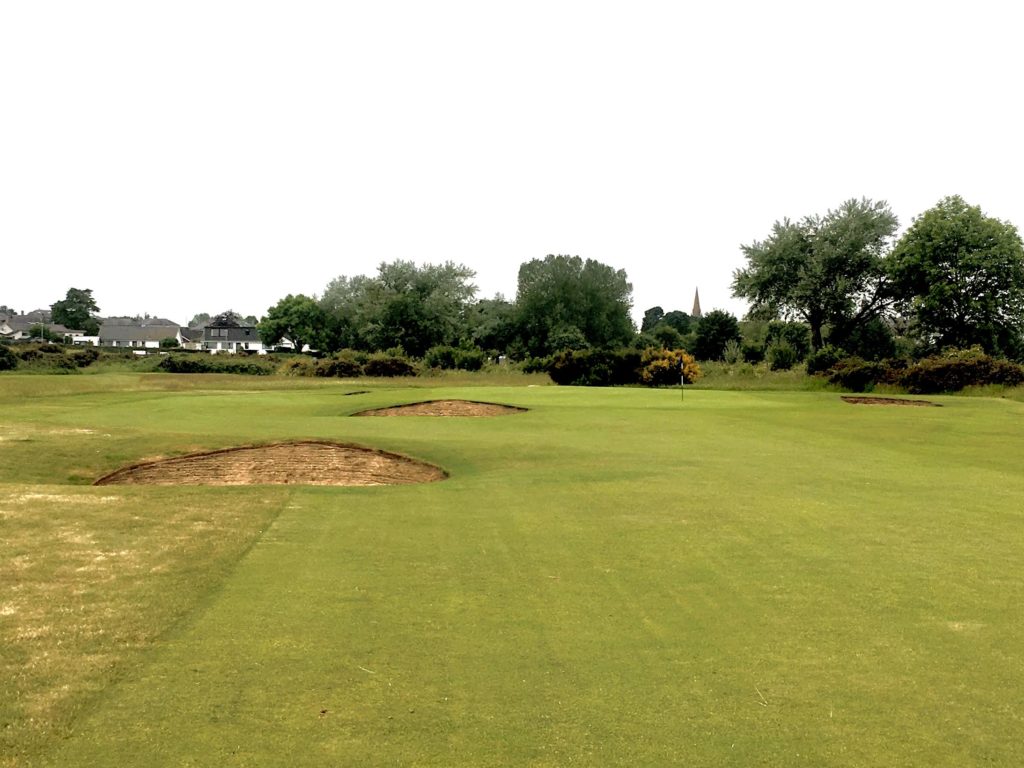 The 16th green
The 16th green
The 16th is a par 5 of just over 500 yards. You have to contend with four bunkers and a burn across the fairway which means it’s a difficult tee shot. Find the fairway and you have to decide whether to lay up or take on the green. Another four bunkers around the green and bushes and out of bounds to the right might mean a layup is your best option. It’s a great risk or reward hole.
Tough Finish
The 17th is all about the tee shot. You must lay up if you can’t carry the wide burn at 225 yards. The burn also runs down the right side of the fairway. Laying up short of the burn leaves a long second shot to a green that is difficult to judge. Take enough club to reach the centre of the putting surface, anything short will run off.
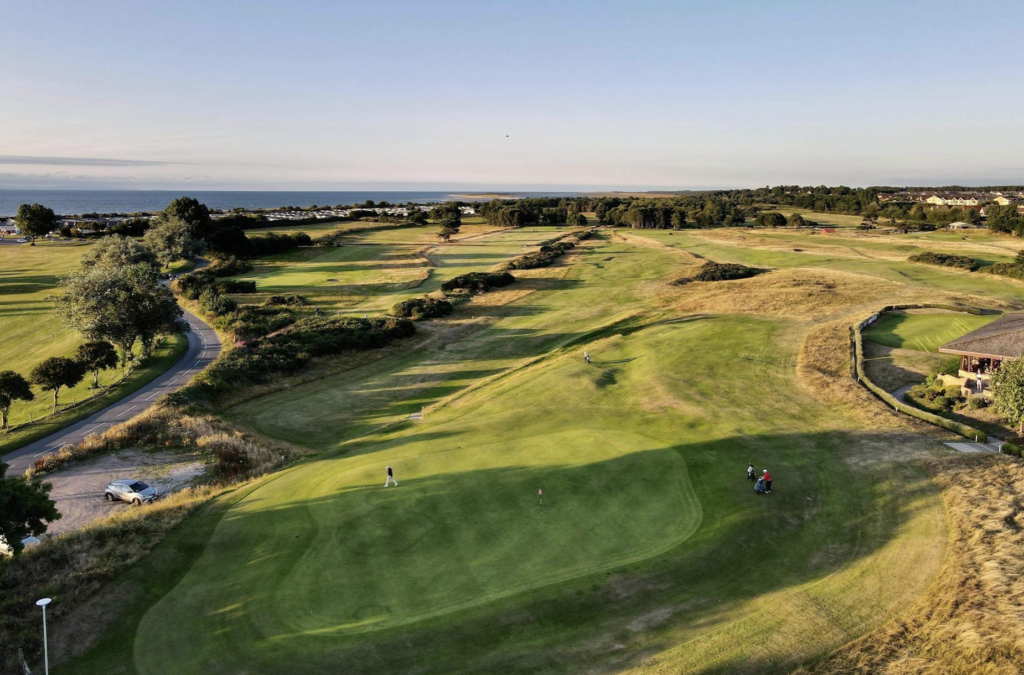 The 18th hole
The 18th hole
The 500-yard par 5 18th is certainly not an easy birdie chance. Gorse bushes run all the way down the right side. Find the fairway and neither a layup, or going for the green is straightforward. A layup leaves a blind 3rd shot to a green that’s above you, over an embankment. Go for it and you have to favour the left side as anything short and right could end up out of bounds.
Summary
We really enjoyed playing Nairn Dunbar which was in excellent condition. It was wonderful to catch up with Robbie Stewart, who was great company and offered words of wisdom on a number of holes, which helped me avoid a lot of trouble. My inland links description is perhaps a bit unfair as the beach and water are very close by. It’s just a pity that they are not visible from the course although it certainly doesn’t detract from the links experience.
One of the endearing aspects of Nairn Dunbar is that its practice range is open 24/7 and is available to both members and non-members. After checking into the pro shop, you head to the range and use your own clubs and balls. Any balls left on the range are collected and passed on to the club’s junior section. That’s one of Nairn Dunbar’s ways of promoting the game of golf.
At a Glance:
- 18 holes
- Practice area
- Practice green and bunkers
- Lovely clubhouse
- Traditional Scottish welcome from all the staff
- Knowledgable and welcoming pro shop staff
In the final article of our visit to the links courses along the Moray Firth, we visit Castle Stuart Golf Links and stay at one of the best hotels we have had the privilege to visit, Ness Walk.

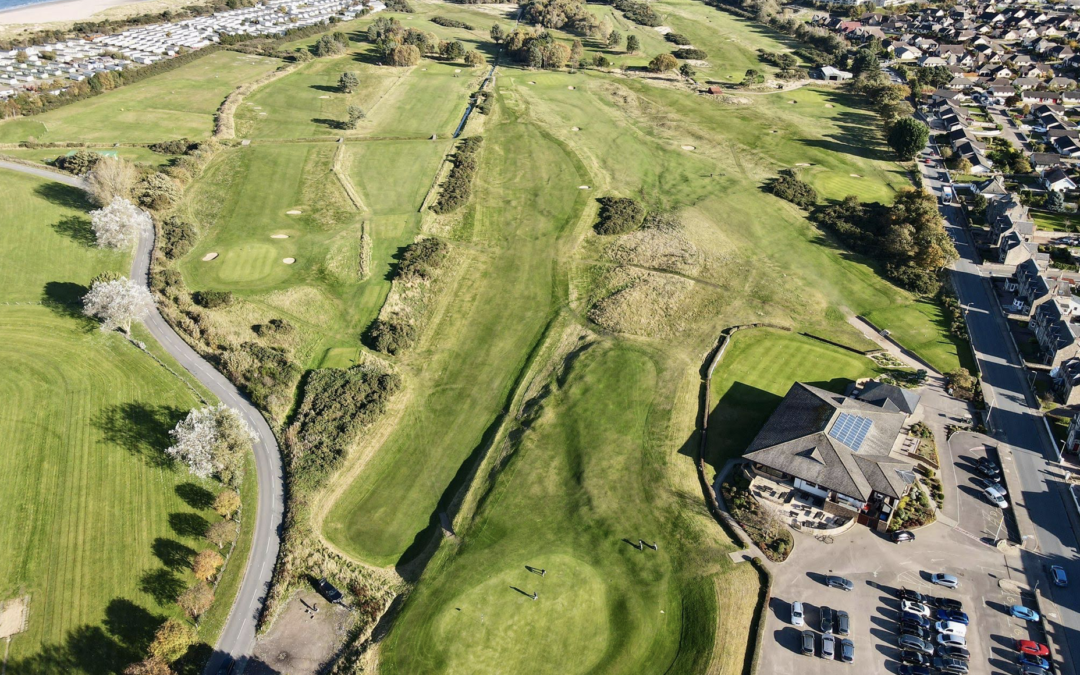

 0
0